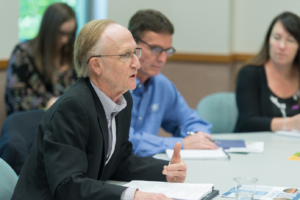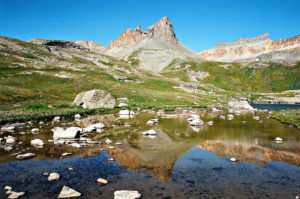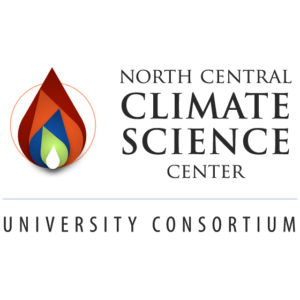
Robin O’Malley is the director of the North Central Climate Science Center, based at Colorado State University. He previously served on the White House Council on Environmental Quality and worked at the U.S. Department of the Interior. Climate science centers — there are eight of them across the country — were created by the United States Department of the Interior. Researchers at the centers work with university and other partners to address the impacts of climate change.
Q: What would you like people to know about your background?
O’Malley: I was born and bred in the forests of the Northeast. I moved to Colorado in February to serve as director of the North Central Climate Science Center at CSU. The human and conservation issues we face in this region are legion, and I’m happy to put my shoulder to the wheel to help address them. I’m also thrilled to be in a place where I can do what I love most – hiking, camping, biking, fishing. Colorado is an outdoor delight.
Q: What do climate science centers do?
O’Malley: Climate science centers help natural and cultural resource managers anticipate and prepare for a changing climate. We provide climate modeling and scenario planning to predict changes in weather and climate in the North Central region.
We help determine how changes in climate will affect fish and wildlife and their habitats, as well as the livelihoods of the communities who depend on Western lands. And increasingly, we work with managers to identify strategies for adapting and coping with these changes and impacts.

Q: You’ve said that climate change is real, and we can do something about it. What are some examples of how the center is addressing climate change?
O’Malley: We are working with the managers of two national parks, Wind Cave and Badlands, to help them understand how changes in climate will affect their ability to maintain bison herds over the long term. This involves creating scenarios, which can help address uncertainties, and analyzing potential changes in vegetation. We have helped managers and scientists identify strategies specific to these parks that should stand strong, even with changes in climate.
Our researchers are also working with the Greater Yellowstone Coordinating Committee to understand how climate change will affect the distribution and persistence of whitebark pine. This tree is a crucial food supply for grizzly bears across the Northern Rockies range, but it has been declining in some areas as a result of native insect outbreaks and other stresses. Because bears and whitebark pine are found across a large region, understanding how climate will affect this species is crucial to planning efforts for multiple federal agencies in the region.
Q: What are some of the major successes for the center to date?
O’Malley: Our work with ranchers and public land managers in southwestern Colorado and elsewhere in the region are success stories about addressing climate change by tackling drought. Drought is an aspect of climate that is real for ranchers, and it does not stir up ideological dust.
It is easy and logical to move from discussing this year’s drought to asking ranchers: What would you do if droughts like this were much more frequent? Preparing for drought is, in fact, preparing for climate change. If we can help managers identify the concrete actions they can take, such as changing grazing rotation schedules or replanting with the right seed mix after a fire, we are succeeding.
 Our work with the Wind River Indian Reservation stands out to me, too. We worked with the Tribal Water Engineer’s Office at the reservation and a large group of partners to provide better information on the onset and progress of droughts, including flash droughts, and to package that information for effective communication to tribal members and others who use water from the reservation.
Our work with the Wind River Indian Reservation stands out to me, too. We worked with the Tribal Water Engineer’s Office at the reservation and a large group of partners to provide better information on the onset and progress of droughts, including flash droughts, and to package that information for effective communication to tribal members and others who use water from the reservation.
We’ve enabled the tribes on the reservation to eventually take over the tasks now being done by the climate science center to better manage their own resources in the future.
Q: What else would you like to add?
O’Malley: Whether it be beetle-killed trees, or wildfire fed by invasive grasses, the landscape is changing. The North Central Climate Science Center is building a regional capability to assist managers of lands, waters, and livelihoods to face these changes with the best available and most applicable science. We’re proud of what we do and continue to seek partners to address this challenge together.
CSU partners with eight universities in the North Central Climate Science Center, including the University of Colorado Boulder, Montana State University, Colorado School of Mines, University of Nebraska-Lincoln, Iowa State University, University of Wyoming, University of Montana and Kansas State University.
CSU Professor Dennis Ojima serves as the principal investigator for the North Central Climate Science Center. He established the center in 2010. Read more about the staff and partners on the center’s website.